For 5 days we have had little or no internet, so this is a long delayed--and very long--post. Keep checking if only parts show up.
And no, we have not been waiting for one last beer or cup of mint tea. The "bar is closed" means the waves
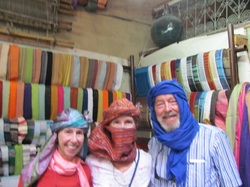 Fun with scarves in the souk Our trip to Fes really outstripped our expectations. Everyone said it was well worth a visit, and we began serious planning after reading the account of a trip to Fes in the blog published by Balvenie – fellow cruisers who left Rabat on their way to the Canaries as we were arriving. They had stayed at a small B&B in the medina called Dar Fes Medina, and raved about it, so we emailed with our choice of dates, only to find that they were full on Monday and Tuesday. But we were able to book Tuesday and Wednesday nights, which worked out just as well, given the fact that the bar (entrance from the sea to the river leading to the marina) would still be closed and we couldn’t leave. The train station in Salé ville on our side of the river is very close to us, and we bought our tickets the day before – first-class, to make sure we had a seat and non-smoking conditions, and the price was very reasonable: roughly $25 each round trip, for a 3 hour journey.
We left on the 11:25 train, arriving at the very new and spiffy train station in Fes at 2:30. Jane asked an English woman whom we met in Salé train station, who runs a guesthouse here, what we should expect to pay for a taxi to the Dar, and the response was “oh, around 50 dirhams” so when one of the taxi drivers out front said 40 dirham to take us to the Bab Ziat (the Ziat Gate into the medina), we agreed with pleasure. Naturally, as we were preparing to return to Rabat we asked our host at the Dar about taxi prices, and he was horrified at what we had paid – so on the return taxi ride to the train station we took a taxi with the meter engaged and were charged a little over 8 dirhams! Oh well, you learn all the time. Since a dirham is about 12 cents US, we can just average the two prices and still come out with an inexpensive taxi.
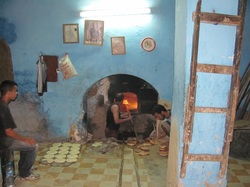 neighborhood baker, Fes Our taxi let us out at the gate, and then we had to make our way on foot into the medina to the Dar, which was just inside the gate. We had a map, but this is the largest medina in the world, our guide told us, with something like 6000 streets and a population of 400,000 living inside the walls. Behind a breathtakingly beautiful carved wooden door, we found our dar. We were ushered in and seated in a comfortable anteroom and provided with mint tea and cookies, after which host/owner Mohammed arrived to welcome us and help us plan our visit. We arranged a dinner in a house/restaurant for that evening, and a full day tour with a guide for the next day--at a cost of only $36 US.
Our dinner was wonderful. Fuad, the owner of the restaurant, came to pick us up in his car and also drove us home – otherwise we’d never have found the place and certainly wouldn’t have been able to get home in the dark. Since cars and motorbikes are allowed only on the very fringes of the medina, we were driven around the medina, inside another gate, and then Fuad walked us to the restaurant. Fuad’s wife and mother were the primary cooks, and it was soon obvious that Madame Fuad, a delightful plump young woman who clearly loved what she did, played a major role. The first course was “vegetables” which turned out to be a large number of individual plates of wonderful stuff, including carrots with cumin, an eggplant mix, something with zucchini, olives, lentils, potatoes, spicy cauliflour, rice, three large flat rounds of bread, and several other dishes. The lamb arrived steamed, with cumin and salt for us to add as we liked, and with a side dish of rice with nuts and cinnamon sugar. Once we were happily sated, we got the tour of the house, which is 500 years old, and has been in Fuad’s family for 100 years. It is also a dar, which means “house”, specifically one built with several stories of balcony rooms around a central space which soars to a rooftop skylight. It is not an open courtyard garden. The other kind of residence is called a riad, and those are usually larger and have a garden.
It’s a good thing we had that long and filling dinner on our first night in Fes, because by the end of our medina tour the next day we didn’t have the energy left for such a feast. Our guide Hakim picked us up at 9:30 and we didn’t get back to the Dar until at least 5 pm – what was supposed to be a five-hour tour lasted much longer, with out any extra charage, and was superb. We saw several medersas (Koranic schools), including al-Karouine, which is the oldest university in the world, dating from the 9th century. Among others, Ibn Khaldun and Moses Maimonides studied and taught there. We weren’t allowed far inside these, because they were still functioning, but we could see the beautiful tile, woodwork, fountains, and carved plaster decorations that characterize the architecture here. We visited the tanneries (think Moroccan leather), a souk full of woodworkers and stalls where they were building large ornate wedding furniture which one rents for the occasion – a big palanquin in which the bride is carried, and a huge wedding throne, etc. We visited a carpet cooperative and had a wonderful time learning about Berber carpets. Just as we were getting to the point in the discussions where Jane and I were expecting Harry to take over with the final reiteration of “we love carpets but of course we cannot buy anything as we live on a boat, Harry said of the carpet Jane liked best “is that your best price?” Jane’s face registered total shock when she realized Harry also loved the carpet, which the showing expert called a Berber Picasso because of the way it uses color and design. It’s indescribable – and beautiful.
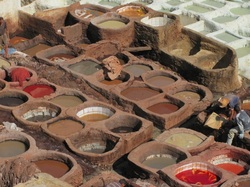 Tanneries at Fes When it came time for lunch we made it clear that we didn’t want anything heavy, just something like a sandwich. Hakim sat us down at a little shop that sold nothing but fruit drinks and water (including individual cups of water that locals came by and purchased by leaving a coin, pouring a little water from a big bottleof spring water into the common metal cup, drinking it, and leaving the cup for the next person). Hakim asked us what we wanted and went off to buy us and himself a sandwich of kofte (which was delicious) for a tiny price, 15 dirhams each (about $1.50 US)
 the calm bar entrance, seen from the Rabat Casbah Internet here is very, very spotty, so this will very short. We decided to come to Morocco now because the weather forecast showed the bar would be closed for the next week because of Atlantic swell. It is wonderful, with no backsheesh at check-in and no hassles in the medina. We are off on the train in one hour to spend 2 nights in Fes, so more later (assuming we get any internet connections)
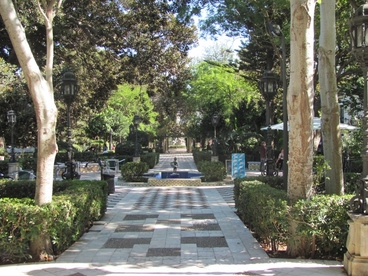 Waterfront park, Cadiz We almost didn't stop at Cadiz, but midway through the trip it was apparent we would get there well before dark, so in we went to the Marina America. After a farce involving changing slips 3 times (mostly our language barrier), then finding there is no wifi, and finally being told the surge in the marina gets bad when the ferries go by, we were thinking we might not stay more than one night. Then morning came and we went for a shower. Wow, there was a laundry, clean toilets and showers, and even a glass walled garden beside the sinks. It doesn't take much to make a cruiser happy.
After that we walked into town, and it was just one beautiful vista after another. Interesting facts about the city are that it was supposedly founded by Hercules, maybe after he pushed on the pillars to open the Med? ( I have to admit that I made this up). There is evidence of Phoenicians from 3000 years ago. More recently, it was the site of the congress of the mainland Spanish and the Latin American countries which wrote the liberal Constitution of 1812. Since next year is the bicentennial, every thing is all spiffed up. These photos here are a lot better than words, so here they are:
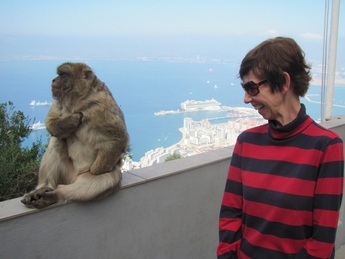 Dale and the Barbary Ape Dale, Jane's sister, arrived in Gibraltar on Wednesday the 5th and she'll be sailing with us all the way to the Canaries. Here is a copy of what she wrote about our first days together:
I arrived safely on Wednesday -- we walked around town that afternoon and then went out for a wonderful Indian dinner, the hit of which was chicken jalfrezi -- if you ever see it on an Indian menu, get it.
On Thursday we took the bus to begin our explorations, and found that the city has made all bus trips free, hoping to reduce the number of cars used,and the pollution. What a treat! There are five bus routes, and among them they can get you almost anywhere in Gibraltar (but not to the summit, as you'll find later).
We went first to Europa Point, which is the point closest to Africa -- Jane and Harry had been there before but it had always been too gray and cloudy to see the African coast, but this time we did.
Then we took the bus to the cable car that goes about halfway up the rock, to a nature preserve where you can see the Barbary apes and take several walks. We had the tourist information map of Gib, and it seemed clear that we could walk south and get to the Mediterranean Steps, and follow them in a long curve further south and east and down to a few more interesting spots. So we set out, after having lunch in the cafe at the cable car depot. Thank goodness we had lunch first. The walk was interesting, and after a bit we realized that we were actually getting to the summit, which we had thought was out of bounds. The view was even better than from the cable car area. Then it got really interesting. After a longish uphill hike, we began to go down -- but not down where we had thought, but down the back (Mediterranean) side of the rock. And this was no simple walk down a hill; it was a series of switchbacks that were very steep, and went on far further than we thought possible. And still there was no indication of a way to get to the location that the map showed as the end of the Mediterranean Steps. At one resting point Jane joked that Harry was pretty soon going to think that we had embarked on another one of Jane's Bataan Death Marches, to which Harry replied that he had thought that long before now. And then the path turned upward again, more switchbacks, with poor Florida me beginning to realize how little I use the climbing up and down muscles. And still no sign of ending at the right place. More walking up, with every turn promising possible to be the end... but nooooo. We encountered a total of four other people on the way, all much younger than us. Finally we got to a kind of tunnel, which I just knew was the end. But it wasn't. We did get out on the other side, but still had some up before we got to more down, and finally to the main road.
But we were at the main road far past the end of the bus routes, and worse yet, not at all commercial, for we had long since finished our water and would have been very grateful for a shop that would sell us even an expensive bottle of water. Finally, considerably footsore, we got to a bus stop, and caught the bus back to the marina. We stopped by the ice cream store for a wonderful confection called the Exotic, which has a mango crust, and vanilla with mango swirls inside. Very satisfying, and when we got back to the boat there was lots of water, because Gib water is very good. And then drinks of course...
Yesterday we prepared for leaving -- which means I went on a bus + walk trip to a couple of interesting museums, and Jane and Harry went to the grocery store.
We left the marina for the nearby anchorage in La Linea, Spain, from which we left Sat. morning at 4:30 am, so as to catch the best possible wind, tide, and current combination to make the 78 mile trip to Cadiz before dark. We mostly motored, but it has been a very nice day anyway.
It is now Sunday and we are sitting in a plaza in Cadiz with wifi. Our trip was beautiful but the winds were lighter than expected. Oh well--better than stronger for sure. Cadiz is a 3000 year old city so just wandering is a treat.
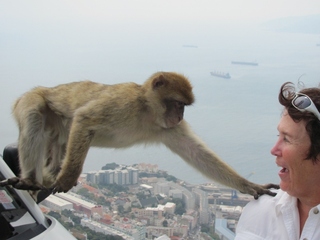 Ape wants a cuddle Jane's cousin Anne and her husband Jay took a day out of their travel time in Portugal and Spain to cross the border into Gibraltar. It seemed so easy for them to rent a car in Marbella, where they are staying, and drive the short distance to Gib. What none of us knew then was how long the queue would be to cross the frontier. After over an hour in a long line of traffic, the bored border guards on both sides finally waved them through (and us the following day, as we in turn rented a car). We had not seen Anne in 10 years and had never met her husband Jay, so we had lots to talk about. We had coffee and cookies on the boat while we talked non-stop, showed them our home, and made plans for the day.
We started out to walk to the cable car, then walk at the top of the rock and see as much as we could. Along the way, we met a mini-bus tour tout and changed our minds. It is alot bigger and steeper up there than it looks, and if you take the cable car you have about 3 hours of walking and it actually ends up costing about 1 pound more once you buy entrances to the sites. So with 4 people from the south of England, we went to Europa point, into St. Michael's cave which was converted into a hospital in case of invasion in WWII and is now used for concerts, saw lots and lots of the famous Barbary Apes of Gibraltar, and went into the siege tunnels started for the great siege of 1779 and enlarged for WWII. The apes are not actually apes at all, but a type of macaque monkey with no tails. The myth is that Gibraltar will remain British as long as the apes inhabit the rock. They are now fed daily with healthy carrots and fruits, and their population even has to be controlled with some form of birth control so their family groups don't get too large and cause fights.
We topped off our touring with an hour in the Gibraltar museum. Then it was back to Cormorant for drinks and more talk before an early Indian meal. Anne and Jay needed to get back before dark so they could rest for their planned day at the Alhambra in Granada on Thursday. Here are more Gibraltar photos:
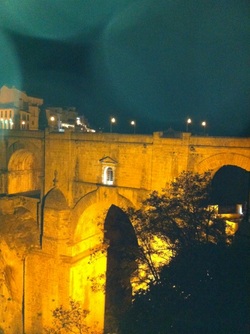 The "new" bridge at Ronda, 1752 We decided to rent a car for a few days so we could get our propane gas cylinder filled and do some exploring. A friend told us to google "cheap cars", so on a site called traveljigsaw we got a car for 4 days for a total cost of 51 euro. Amazing. We reserved the smallest car offered but the one we got was the Peugot 308 diesel--really nice.
We got stuck for over an hour on Thursday morning trying to get back to the boat to pick up the gas cylinder after getting the car on the Spanish side of the border. Then we got lost in La Linea, but finally we got to Estepona where the man is who will refill American tanks. All the European fittings are different, so getting propane is something of a mission anywhere in the Med. Our man had to go for his 2 hour Spanish lunch before we could get there, so we also had a 2 hour lunch while we waited! At about 5:30 we started up into the Sierra mountains to the historic city of Ronda, and we were glad we had been delayed so long on the coast. The road was twisty and steep, but all the day tourist traffic was over so it was a stunning drive.
The town was built at the top of a mountain split by a deep river gorge. The first bridge across the gorge was built in the time of the Moors, about 800 or so, to link the old town and the new town. Then in the 17th century another bridge was built higher up, but it is now called the "old" bridge because of its replacement, here seen out the window of our hotel. The other important thing about Ronda is that it is the site of the first purpose built bull ring in the world. The first fight in it took place in 1785, and it is still in use. We had no interest in seeing a bullfight, but the building and the museum and the stables and bull pens were fascinating. Hill towns are in every European country it seems, and all a
 Plastic coated shores of Andalucia On Thursday morning, Sept 22, the first day of shorter daylight hours after the autumnal equinox, we motored out of Almerimar marina and along the plastic covered coast. It's not pretty to say the least, but these greenhouses provide lots of food and flowers for markets. Since entering the Med in June, 2009, we have enjoyed being a part of Europe (especially our winter in Gaeta), walking in the paths of history, and seeing old friends and meeting new. On the other hand, the sailing was not great and wonderful anchorages few and far between. We've loved our time here and made the most of it, we think, but we are happy to be sailing west. We can return by air, so it's not "goodbye Europe" completely.
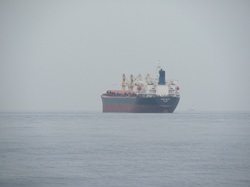 ship adrift, on our path Now it is HELLO, GIBRALTAR! It was an easy overnight motor, although the Med stayed true to its nature and our forecast easterly winds (favorable) became westerlies within 6 hours, and we motored into the wind, with adverse currents too every 6 hours. The biggest challenge was the large numbers of ships just drifting on both sides of our route. It is too deep to anchor, so while they wait for a berth in port they save fuel by drifting. Thank goodness for AIS, because in the "old" days we would have both been up puzzling over lights and directions and collision paths. Now we can check the AIS data and see that they are pointed one way, yet moving at less than 1 knot in another direction--definitely drifting. We still remain vigilent, since there is always the odd ship without AIS or with a malfunction, and of course the yachts and fishing boats rarely have AIS transponders.
Now here we are in Gibraltar at last, and we really feel that we have started on this next phase of our cruising. Many of the other boats here are also crossing the Atlantic this season, so there is lots of talk about paths--Morocco? or Madeira? or Atlantic Spain & Portugal? or ??? As usual, we aren't sure so we will wait to see how the winds go when we are ready to leave. Meanwhile, you can see from the photos that there is lots to see and do here. We have to climb the rock, see the apes, see all the war memorials, and share sea stories with other cruisers. Dale (Jane's sister) will come to meet us next Wednesday, and we'll save some of the Gibraltar touring until she gets here. She will be with us to the Canaries, and luckily she is relaxed about what path we take. It will all be good we know.
We got back aboard Cormorant late on Thursday night, after a long saga of missed Space-A flights from the USA to Spain. Our 3rd try worked and on Wed. we flew from McGuire Air Force Base to Maron in Spain Again we met some wonderful people on the flight. Jerry and Ann live part of the year in Spain and once aground, they rented a car and we drove to the nearest town and went directly to the National Police station. Our absolutely first order of business was to get an entry stamp into our passports so we would be legal in the EU and Schengen. After a coffee together, they dropped us at the bus station in town, and we rode buses all day to get back to Almerimar and the boat. It was heavenly to sleep in our own bed and feel the boat rocking gently.
The main reason for no photos is that we have been contorted in strange positions trying to get wires into impossible places. At one point yesterday I was curled up inside the lazarette pushing a wire while Harry balanced on top of the arch trying to see it going past the small outlet. Somehow now the wires are in and we are still talking to one another. We are installing our new AIS transponder, which means that not only will we now be able to see information on where ships are, where they are going, how close they will come to us, and what their name is, our own boat will also show on their screens. Hopefully this will make them even more aware of a tiny sailboat out there with them. We plan to leave tomorrow or Thursday for Gibraltar so we will certainly get a good chance to check it out. There could be over 100 ships within range as we approach the harbour.
We promise there will be more photos next time. Maybe we'll even take one of a Gibraltar ape.
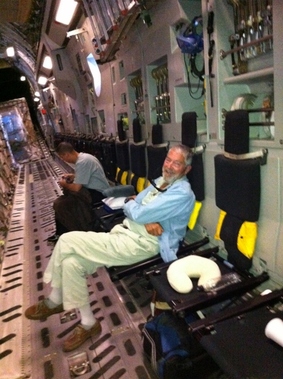 Thanks to Harry's 32 years in the Air National Guard and the US Air Force Reserve, once he turned 60 we could travel space-a. When a US military plane has extra space after filling all its mission requirements, eligible people "catch a hop". So on Saturday morning, 20 Aug., we rode the local bus from Almerimar to El Ejido, then the long distance bus to Cadiz, with 2 changes. Finally, we arrived, but after the last bus for Rota, where the air field is, so we took a taxi for the last leg. On Sunday we got a ride on a C-17 plane to McGuire Air Force Base in New Jersey. Here Harry is relaxing in his seat, but others were stretched out on the floor having a nice sleep. It's not BA first class, but we really like it and you can't beat the price!
From McGuire we shared a car with another space-a user to go to Dover Air Force Base, about 3 hours away, for a flight to Charleston, South Carolina. Space A travelers are a friendly group who, like cruisers, often step up to help each other. After a good night's sleep we rented a car in Charleston and arrived in Jacksonville Tuesday afternoon. It is wonderful to be together with family, so we will be enjoying the easy life here for the next few weeks.
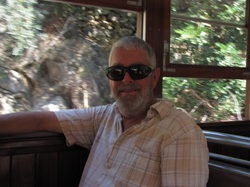 We have not had any internet, so over 300 miles have passed beneath our keel since we wrote. We made an easy overnight from Menorca to Soller in Mallorca. Every cruiser we met said it was the best place in Mallorca, and since it also has a train for Harry, we sailed directly there. Since it is August, every anchorage is jam packed, and this was no different, but by arriving early in the morning we could grab a good place with some room--or at least some room until late afternoon. The Victorian tram up to the main town of Soller from the port provided some nice views. But at 4 euro one way the bus (1 euro 20) is a good option for another trip. From Soller, we took the narrow gauge train, built in the 1920's to carry fruits and vegetables from Soller to Palma. This was 10 euro for a one way ticket, but Harry did enjoy himself as you can see in this photo. There were several very long tunnels to get through the mountains, but in under an hour we were in Palma.
Palma proved to be a surprise. We knew Mallorca was another Mediterranean playground for the rich and famous, and it was the King's Cup racing week, so we expected lots of glitz, Cartier and Armani stores, and so forth. What we found was a delightful old city with narrow alleys to wander, a beautiful cathedral, and the best chandlery we've seen in years. (Sailors never go far from the sea...) We were glad we didn't bring the boat into the harbour, since there is no place to anchor and the marinas are very costly, but it was easy to get there by train, and the bus back to Soller took half the time of the trains and only cost 3 euro 95 each.
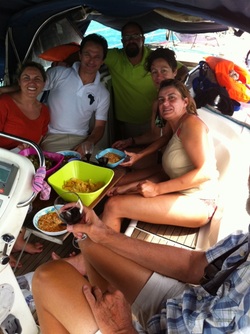 The winds were right, so the next day we sailed 30 miles to Cala San Ponsa, a big sandy bay, for overnight, and then with a first light start we contined another 70 miles to Formentera, the small island just to the south of Ibiza. With the August crowds and the reputation of Ibiza for all-night parties, we chose the quiet anchorage of Espalmador. The cruising guides said that by the end of the season the sand gets thin here, and so it proved to be. We moved around to find a clear patch of sand, only to have a motor boat, with no windlass and only one man aboard, drag and get caught on our anchor just at dusk! Luckily just an hour before Carlos and Juan, on La Sultana, had stopped by in a kayak, talked for awhile, and invited us for lunch the following day. They were swimming when this happened and they volunteered to snorkel over and dive down to free the man's anchor. Another wonderful example of the generosity of cruisers in helping each other out. Carlos did an Atlantic circle with his boat--before the arrival of his 3 sons--and we had a wonderful time trading sailing stories, eating his wonderful Spanish rice, and getting to know the 4 young women who were guests for the week on his boat. We had them over to Cormorant that evening. It is always so special to get to meet local people, and if we ever get to Madrid we now have several invitations.
Again the winds were right, so we left Thursday morning with easterly winds and sailed much of the way to Almerimar, where we arrived early Saturday morning. It has been great to cross paths and catch up with our good friends Bo and Vivi who are moving east to Turkey. We plan to leave the boat here for about 6 weeks. We will catch a space-a military flight from Rota to the USA for a short visit, then do more boat chores in preparation for the Atlantic crossing.
Cruising-sailing updates will be on hold until late Sept., but we will still make g
We have been loving it here in Mao. One entire day was spent exploring the tunnels and moat of Fort Isabella, just by our anchorage. The highlight was a special 1 1/2 hour tour into the works of the 1932 Vickers gun, installed for coastal defense. It has never been fired except in practice, but it was a wonderful look into "how it works". Just the mechanism for getting the shells up into the gun from the underground storage was fascinating.
The next day, we decided to go on a hike we found in a guide book. It must have been written by a hash-house-harrier, because the directions were " ignore the next gap in the wall, walk 2 minutes, ..." After over 2 hours of wandering along the coast along the old Cami des Cavalls--the horse trail around the island--and goat tracks, we missed some important turn. An hour later we finally found a paved road and sat down on a stone wall to wait for a taxi. Definitely a good decision!
That night we were invited aboard Mokoko for dinner. We knew the boat from our trip up the Red Sea, but she now has new owners, David and Michelle from Hobart, Tasmania. Along with another couple, Phil and Monica, from Miss Molly we had a real "cruiser evening" of guitar and harmonica music. Neither of us can play, but we can sure listen.
Probably tonight we will move on to Soller on Mallorca, if the weather forecast holds.
|



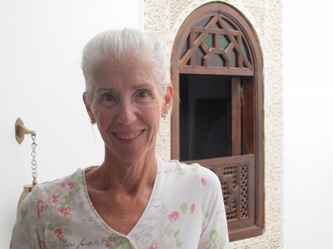

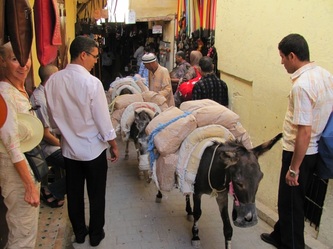


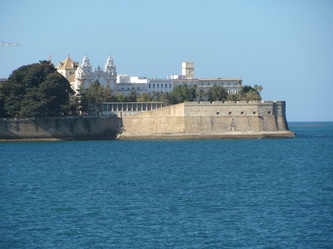
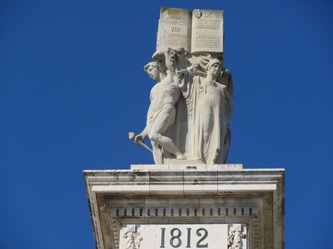
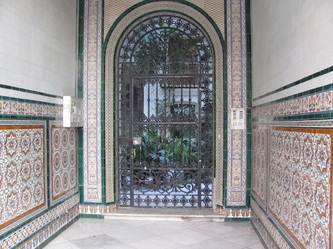
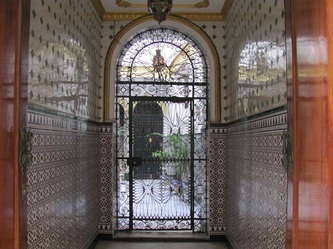
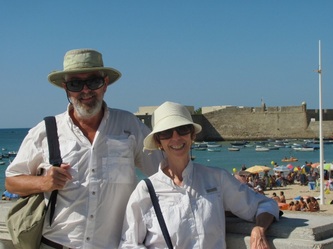
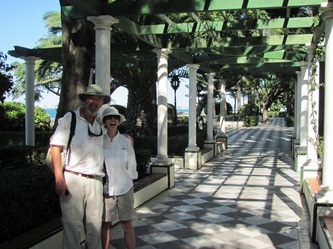

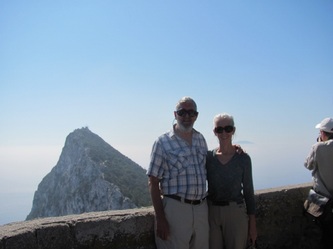
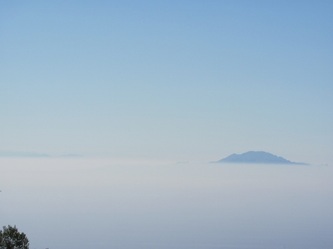

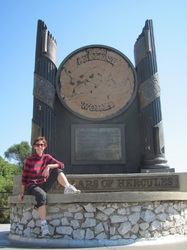


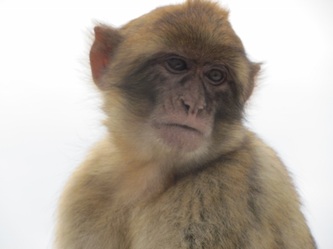
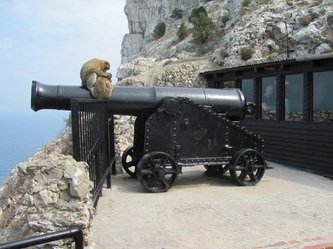


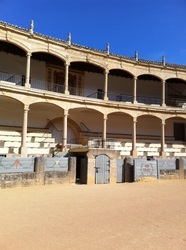
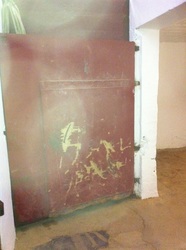
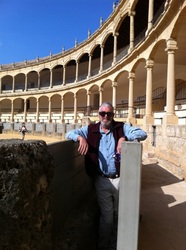
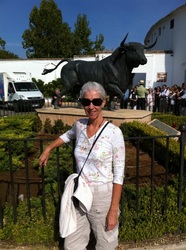




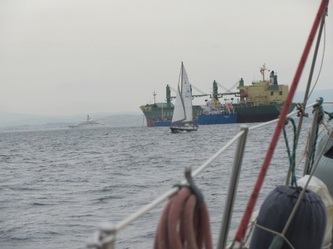

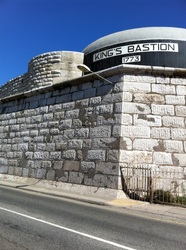
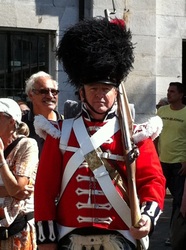
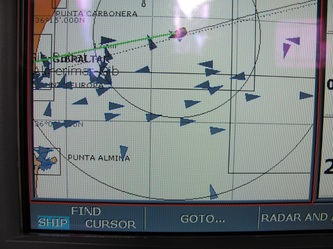


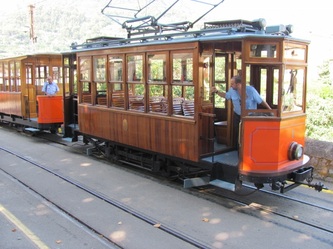
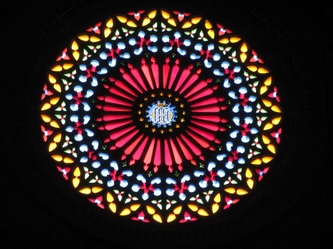
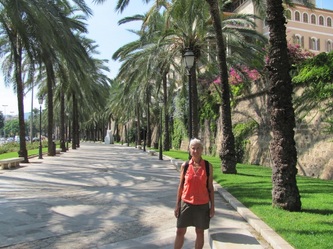

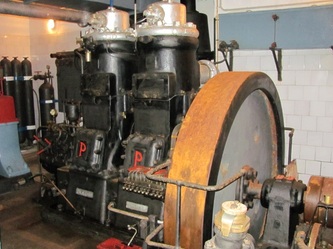
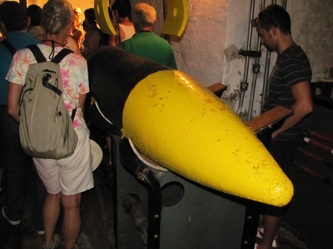
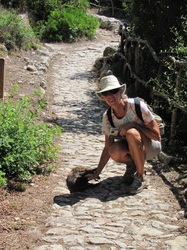
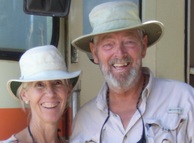
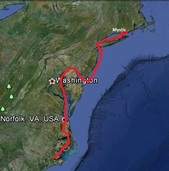

 RSS Feed
RSS Feed